Memorial to Lord Austin
Medical Department
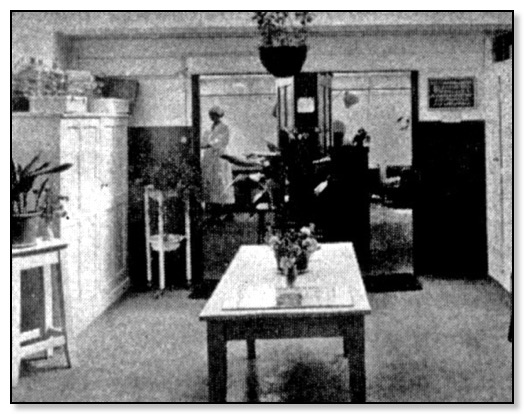
The First Medical Block Entrance
In view of the importance of keeping men and women fit for work, vital in war time, the Directors decided to set up the new magnificently equipped Medical Department dedicated to the memory of Lord Austin. This was officially opened at the Austin Works Longbridge on the 3rd December 1941 by the Air vice-Marshal Sir David Munro, KCM, CIE, LLD, FRCS, Secretary to the Industrial Health Research Board and Chief Medical Officer at the Ministry of Supply. The department was a two-storey building situated near the main entrance, ‘K’ gate. The ground floor had a treatment room for men and another for women, a resuscitation room, and a room for X-ray work and physiotherapy; there was also a bathroom, primarily for the treatment of serious burns. The upper floor comprised a large examination room with cubicles, a smaller consulting room, a laboratory for chemical and bacteriological examinations, and offices for the medical staff.
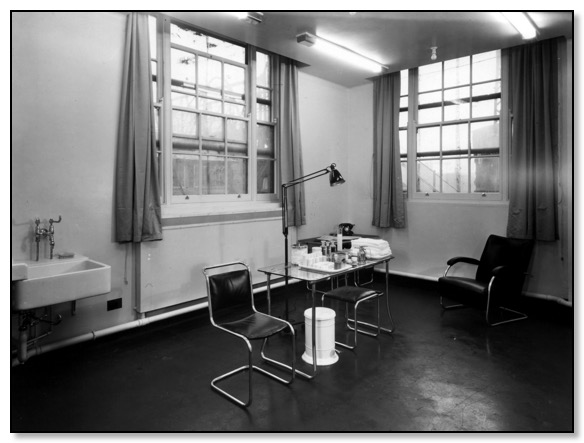
Room inside the Medical Block
The department had modern style, furnishing and lighting, central heating, and plentiful hot water. thus providing first-class accommodation for the needs of the three medical officers, and continuing the ongoing welfare services that Herbert Austin had pursued. He had always been concerned for the health and welfare of his employees.
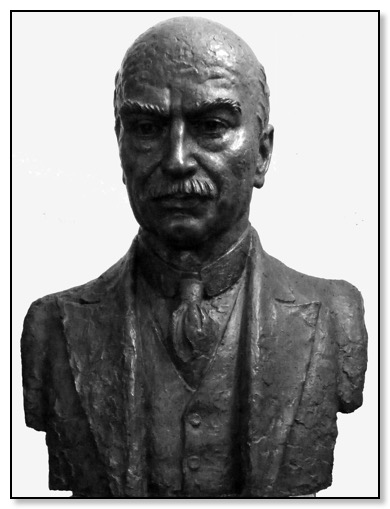
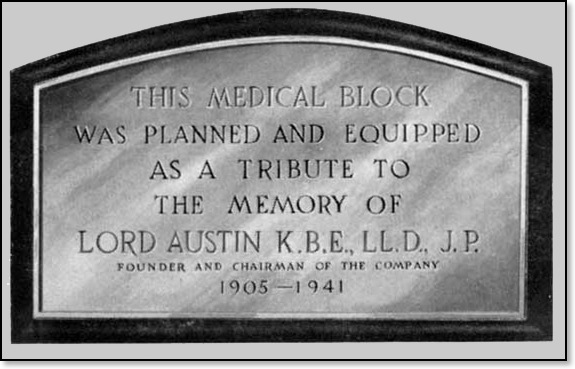
In the entrance hall of the new Medical Block, this plaque was beneath a portrait of Lord Austin.
The Opening ceremony was on the 3 December 1941 and Mr E L Payton, Chairman of the Austin Motor Company said in the course of his speech, that as one who for nearly twenty years was in almost daily contact with the late Lord Austin, his thoughts and feelings on this occasion reverted to the characteristics, achievements and results obtained by Lord Austin's personality, engineering genius and human understanding, the combination of which made his name a household word not only in the British Isles but all over the world.
Those who were privileged to know him (and there are many present who had that pleasure for over 30 years) always realised that while the late Lord Austin was of a modest and somewhat retiring nature, that exterior went far to mask an untiring energy devoted to his life's principal activities, namely, the development of these Works and of the financial welfare and upkeep in modern equipment of the principal hospitals of the City of Birmingham.
For a number of years, Lord Austin was Chairman of the Board of Governors of the Birmingham General Hospital and during that time donated large sums of money for the purchase of modern equipment for research and practical treatment, and, as his first interests were centred in this particular Hospital, the human side of his nature was amply demonstrated up to the time of his death by the monetary gifts which he gave every year at Christmas time to the patients, as well as gifts in kind to the Staff; but these were always quietly administered by himself, and each Christmas morning - until quite recently - it was his practice to visit the Hospital to distribute them. This action, to a man of his somewhat retiring nature, was something of an ordeal, but he derived a great deal of pleasure from it.
His knowledge of hospital routine and financial matters naturally caused his services to be sought in connection with the city's greatest hospital development, namely the Queen Elizabeth Hospital, and during the difficult period prior to the opening, Lord Austin, as Chairman, devoted a considerable amount of time and energy and ultimately consented to become President, which office he relinquished shortly before his death.
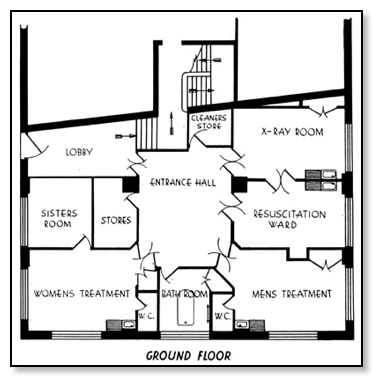
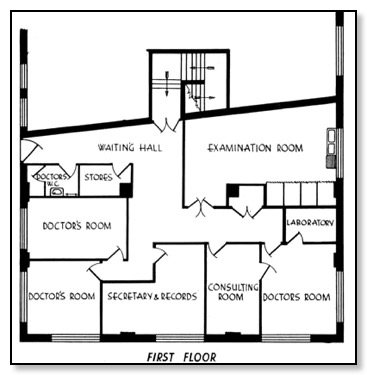
This shows the layout of the Block and various rooms,
although small changes were made over the years.
The Medical Department consists of accommodation for five main purposes :-
1. Investigation of health problems which may arise in the various departments of the Company.
2. Immediate treatment of major and minor injuries and sickness.
3. To carry out any other treatment necessary to prevent loss of time and wages by an employee and interference with production.
4. For medical examinations, including the the examination of young persons under the Factories Act, of employees voluntarily wishing medical advice, and of men and women referred from the Labour and Welfare Departments to determine their suitability for employment, or to advise on the type of occupation for which they are best fitted.
5. Administrative, to carryout the clerical work necessitated by contacts with medical practitioners and hospitals, and for keeping records.
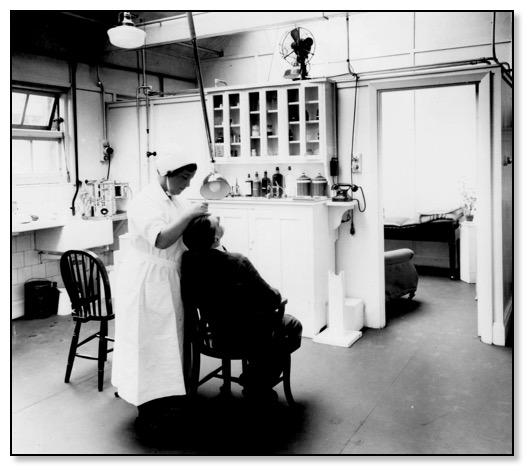
Early Ambulance Station
This new block along with ten Ambulances Stations around the factory, now provided first class medical care at all times. An indication of the immense contribution the Ambulance Stations supplied to the employees’ health, is given by the following figures. In 1940 with a work force of around 30,000 working 24-7, on average they dealt with 460 cases, of varying severity every day.
At the opening ceremony Mr. Murphy, chairman of the Works Hospital and Benevolent Fund, that during the years 1933-40 the workpeople had contributed to the Birmingham Hospital Saturday Fund (BHSF).
(A fund was set up on 15 March 1873 and this was the first British scheme for raising money for all voluntary hospitals in an area. By 1879 the collections had dwindled, and it was decided to replace the scheme with a fixed weekly contribution of 1d. On 29 December 1891 the BHSF fund was incorporated as a limited non-profit company. Over the years it acquired large houses for conversion or constructed new convalescent homes around the country.)
Workers at Longbridge had contributed nearly £69,000 to the BHSF; the company added a further £13,000, making £82,000 in all. If workers needed medical treatment away from work, either at a doctors or hospital, they obtained vouchers for payment. Between 1933-40 the scheme had issued vouchers to the Austin workforce to the value of £66,000, and this allowed thousands of workers to go to convalescent homes.
When The National Health Service Act 1946 came into effect on 5 July 1948, giving free medical treatment to all, the BHSF changed direction. It now subsided dental and optical etc. Employees could also convalesce after major surgery, usually at Kewstoke in Weston-super-Mare.
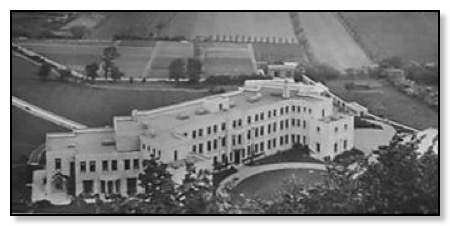
Kewstoke Convalescent Home
The following is an extract from a handbook issued to all employees starting work at “The Austin” in the 1950s.
There was a “Lord Austin Longbridge Works Memorial Fund” The Fund was formed in 1942 to perpetuate the memory of the late Lord Austin, KBE, LLD, JP, who founded the Austin Motor Company in 1905. The object of the Fund is to assist cases of hardship amongst employees.
The company donated £1,000 to start the Fund and gives an annual donation to assist in its work. The employee’s contributions is 1d per week.
The Austin Workpeople’s Benevolent Fund, is for all employees on check (that is, people who worked on the shop floor), irrespective of age, the contribution to the fund is 4d per week, deducted from wages, from which sum, 1d helps to provide convalescent treatment through the medium of the Birmingham Hospital Saturday Fund. The remaining 3d goes to the Benevolent Fund, the main purpose of which is to assist contributors who have been absent from work for six continuous weeks or more through illness.
The Health Department is responsible for advising Management on matters which concern the health and well-being of employees within the factory and for the emergency treatment of injuries or illness occurring at work.
Injuries or sudden illness at work are treated in the first place in Ambulance Stations which are located at convenient points around the factory. In all there are nine of these in addition to the main central Health Department. All Ambulance Stations are open during normal factory hours. At night and at week-ends they are open according to the number and location of employees at work.
All Ambulance Stations are staffed by fully trained nurses who use the most up-to-date methods of treatment. It is important that each employee should know the location of his Ambulance Station and should use it. Prompt attendance at these Stations is important, even for small injuries, for two good reasons. Firstly, early treatment will usually prevent a small wounds becoming septic and causing dangerous complication and loss of time from work, and secondly, the record of the injury at the Ambulance Station is important and necessary evidence, should an employee later have to make a claim under the Industrial Injuries Act. Failure to report any injury may thus greatly inconvenience the employee.
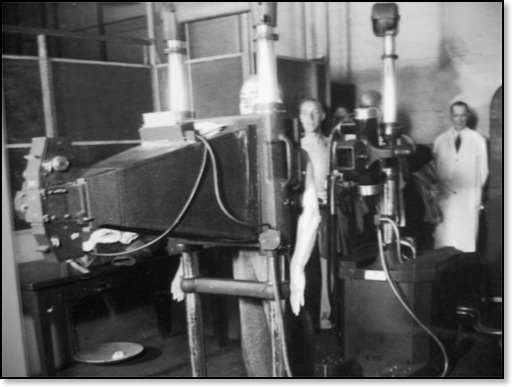
X Ray Machine
The Company’s doctors are located in the Central Health Department. Here all the more serious injuries are treated and all employees requiring medical advice, in relation to their employment, are examined. The department is fully equipped with X-ray and other modern apparatus for investigating illness and has facilities for such special treatments as physiotherapy and chiropody.
The X-ray apparatus consists of a mobile unit of the latest pattern and a table fitted with a Potter-Buck diaphragm and a screening attachment which can be used in the horizontal or vertical position. A nurse with experience of radiography is on the staff. Because of the large number of employees, the distance of the Works from Birmingham's main hospitals, and the frequency of cases where simple radiography saves a visit to hospital, there are economic grounds for its installation.
The Health Department is open during normal factory hours and in addition on Wednesday evening, when any employees with problems may be seen by appointment. At other times a doctor is always on call and will attend at the factory for any emergency.
Employees may be referred to the Health Department by the nursing sister in charge of an Ambulance Station or may be seen at their own request if they are worried about some aspect of their health. All interviews and the findings of all medical investigations carried out in the Health Department are strictly confidential between the doctor and the employee and will not be disclosed without permission. This applies also to medical particulars received from doctors or specialists in letters addressed to any of the doctors in the Health Department.
Close co-operation between the Health Department and employees’ own doctors is maintained, the latter being informed of all matters of importance affecting the health and well-being of the patient. Treatments started by employees’ own doctors or at hospital can often be continued at the Health Centre, thus saving employees loss of time.
Certain categories of employees are medically examined as a routine. They are mainly employees whose work requires a special degree of fitness or whose work involves the safety of others, eg., crane, transport and locomotive drivers, foundry workers, sheet metal workers, etc.
Juveniles, ie. young people under eighteen years of age, who are employed in the workshops are required by law to undergo a medical examination within the first two weeks of their employment, and thereafter annually up to the age of eighteen. It is important therefore that juveniles should attend appointments as required under the Factories Acts.
A close link between the Health Department and the Welfare Department. Employees attending the Welfare Department after an absence of more than six weeks due to injury or illness are always referred to the Health Department for medical advice or if in doubt about their fitness for a particular employment.
Disabled employees seeking the privilege of a disability pass to enable them to leave the factory early (five minutes) to catch their transport, are similarly referred at yearly intervals for assessment of their disability.
In addition to the foregoing medical facilities the Company provides a Rehabilitation Unit in which there are special employment facilities under medical supervision for unfit or injured employees who, having completed their medical or surgical treatment at home or in hospital, but still have to recover to full working fitness or full function of a hand or limb. Special apparatus for remedial exercises after injury and for graduated work after illness is available. Resettlement in the most suitable employment is arranged after rehabilitation.
Care of the Eyes
Vision testing and ophthalmic attention under the National Health Service are given by a fully qualified optician who is in attendance at the factory on three mornings a week. Monday, Wednesday and Friday.
The Consulting Room adjoins North Ambulance Station and appointments can be made by telephone. Phone No 853.
Chiropodist
A Chiropodist is in attendance in various parts of the Works. Appointments and further details may be obtained by contacting the Ambulance Station in your section of the Works. A small charge is made for the service.
Dental Department
A well equipped Dental Surgery is situated adjacent to the Central Health Department, South Works.
It is under the care of a fully qualified dental surgeon and treatment including the services of a dental technician is given under the National Health Service. Appointments can be made for attention during working hours, by telephoning 594.
________________
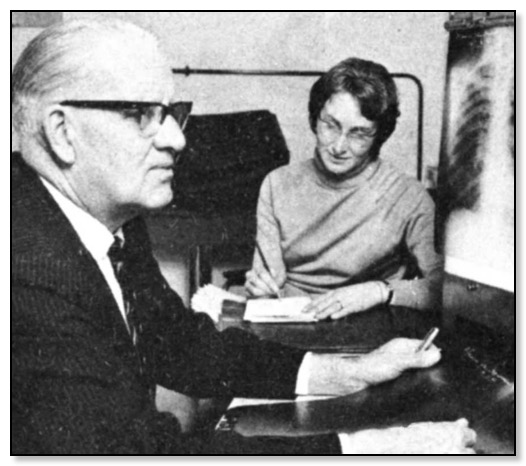
Dr Albert White and Mrs Pamela Stubbs secretary for 16 years. (1971)
RETIRING home to the most northerly of the British Isles, the Shetland Islands, Longbridge's Chief Medical Officer. Dr. Albert White, will not find it too difficult to adjust after 24 years In the heart of the Midlands. 'I have been back to the Shetlands whenever I could. It is a place where I think I know pretty well where to find the best fishing,' he explained, giving a pointer to his retirement activities. Dr. White obtained his medical degree at Aberdeen University, and joined the Austin Motor Company in 1946 having served in the Royal Army Medical Corps with the 14th Army in the Far East.
Far-sighted 'I think that it was during my Army service that I first became aware of the challenge presented by maintaining the health and well-being of large groups of people. As, firstly, Senior Medical Officer, and then Chief Medical Officer, this has been my aim.' During his career, and with the assistance of what he describes as a very farsighted Company', Dr White able to develop the Longbridge rehabilitation unit and has played a major part in establishing the works industrial hygiene laboratory.
The conditions under which people work must have direct bearing on their health. With the introduction of new substances and processes we felt it was essential to make sure that these were not harmful to health. And if our checks did show possible harmful effects we would devise safe working condition."
The Longbridge Operations factory in South Wales at Bargoed, which employs former miners suffering the of dust in their lungs, has also been within the scope of Dr. White's responsibilities. 'I have, throughout my career here, been in touch with both Management, shop floor supervision and, of course, our shopfloor people,' he said. 'The degree of co-operation and ready assistance has been outstanding both for me and for my medical staff. In the field of occupational health Longbridge works has set an example to industry.

